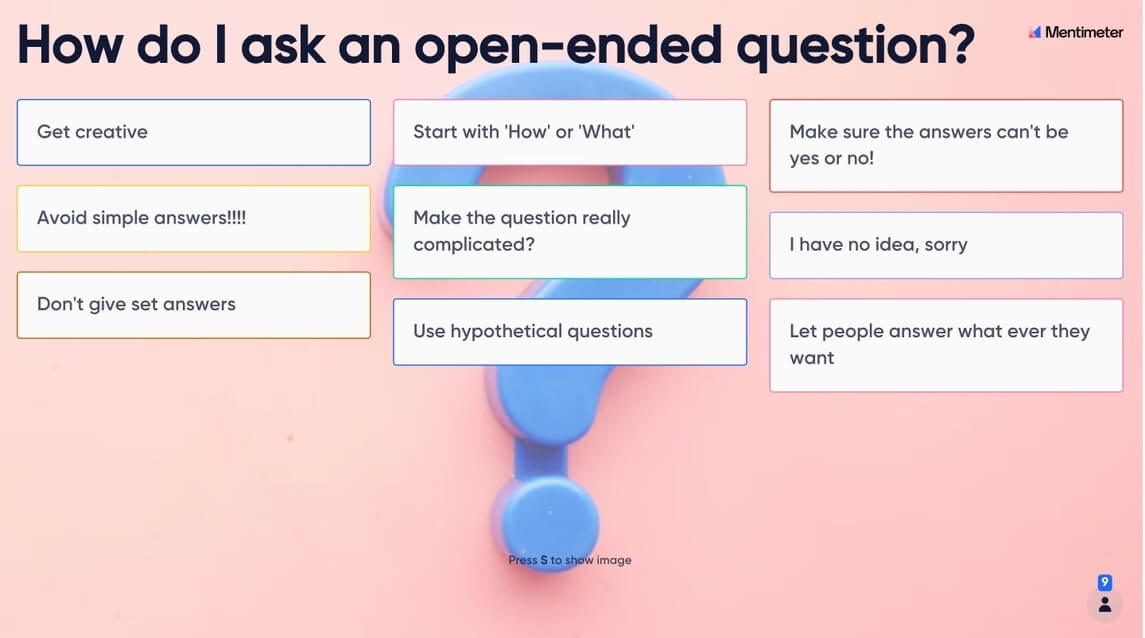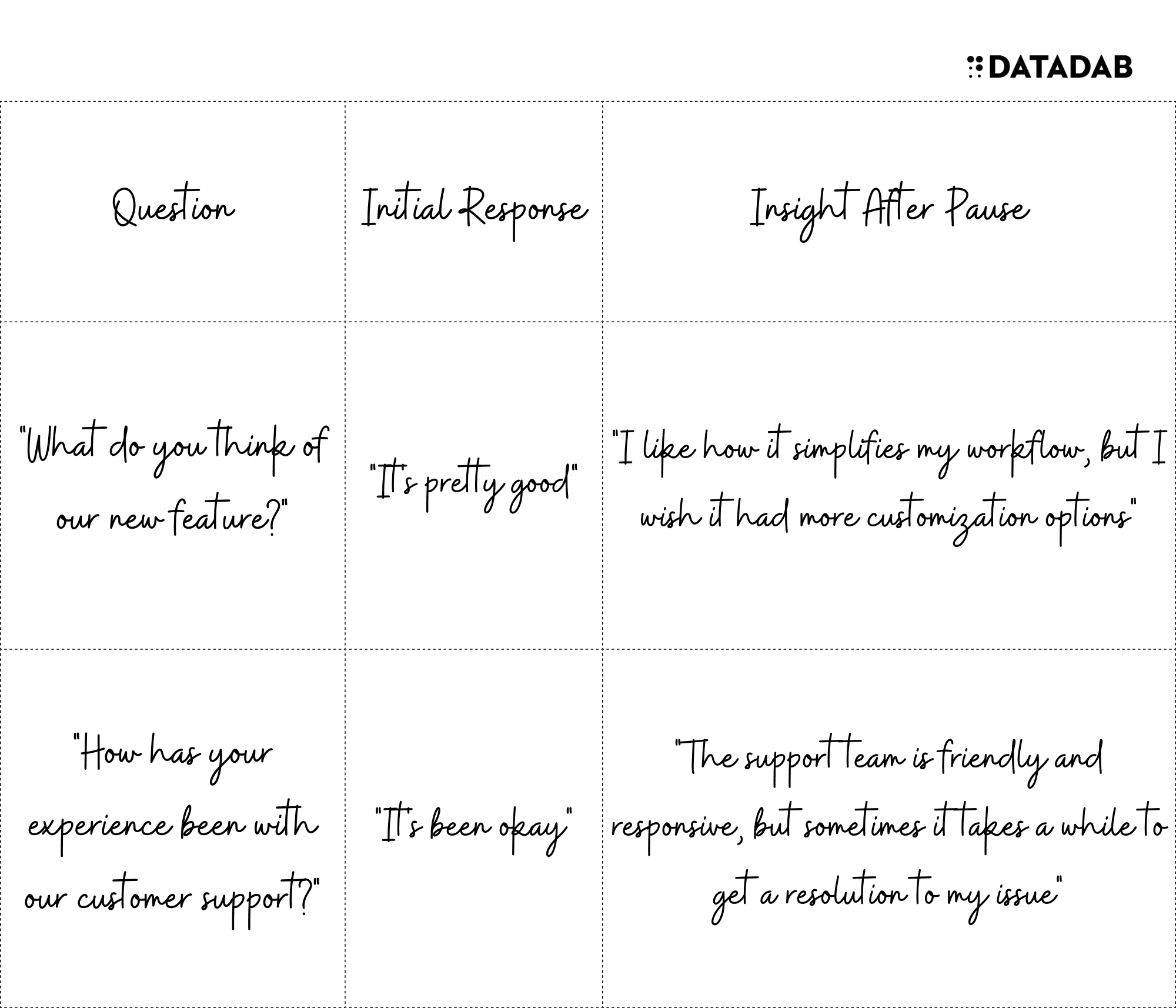I've seen firsthand just how powerful well-crafted customer interviews can be. When you ask the right questions in the right way, you unlock insights that can absolutely transform your product, marketing, and sales strategies.
But here's the thing: getting to those game-changing “aha!” moments takes more than just firing off a few standard survey questions. It requires a deep understanding of what makes your customers tick, a strategic approach to crafting your questions, and a knack for reading between the lines of their responses. In short, it's an art as much as a science.
In this post, I'll share some of the advanced methods and strategies I've used for years to create great customer discovery programs. We'll take a look into the nitty-gritty of question framing, psychological tactics, and interview techniques that will help you uncover the insights your business needs to thrive.

Going Beyond the Basics
If you're reading this, you likely already understand the fundamental importance of customer research. You know that it's essential to validate assumptions, identify pain points, and uncover opportunities. However, crafting questions that elicit truly meaningful responses requires going beyond the basics. It demands a keen understanding of human psychology, a strategic approach to question framing, and a willingness to dive deep.

The Power of Open-Ended Questions
One of the most potent tools in your customer discovery arsenal is the open-ended question. Resist the temptation to ask leading questions that presuppose a particular answer. Instead, allow your customers the space to express their thoughts and feelings in their own words.
| Question Type | Example | Insight Potential |
|---|---|---|
| Closed-ended | Do you use our software daily? | Limited, yields only yes/no responses |
| Leading | Our software is easy to use, right? | Biased, may not reveal true opinions |
| Open-ended | How has our software impacted your workflow? | Rich, uncovers detailed experiences and opinions |
Questions like “Can you walk me through your typical workflow?” or “What are the biggest challenges you face in your role?” can yield rich, nuanced insights that you might never have considered otherwise.

Embrace the Silence

Inexperienced interviewers often rush to fill any lull in the conversation, but embracing moments of silence can be incredibly valuable. After asking a question, give your customer time to reflect and formulate their response. Typically, the most revealing insights come after a pause, when the interviewee has had a chance to gather their thoughts and dig deeper.

Dig Into the “Why”
| Initial Response | Follow-up Question | Deeper Insight |
|---|---|---|
| "I like the automation features" | "Why are the automation features important to you?" | "Automation saves me time and reduces errors, so I can focus on higher-value tasks" |
| "I find the reporting functionality lacking" | "Can you give me an example of a report you wish you could generate?" | "I need to be able to create custom reports that show KPIs specific to my role and industry" |
Whenever a customer shares an insight or opinion, probe further to uncover the underlying motivations and reasoning. Ask follow-up questions like “Why is that important to you?” or “Can you tell me more about what you mean by that?” By digging into the “why” behind their responses, you can uncover the true root causes of their needs, challenges, and desires.

Leverage Hypotheticals
| Current Challenge | Hypothetical Solution | Insight into Ideal Experience |
|---|---|---|
| "Manually entering data is time-consuming" | "If you could automatically sync data from your other tools, what would that look like?" | "I'd love to be able to set up integrations with my CRM and accounting software, so all my data is always up-to-date" |
| "It's hard to keep track of all my tasks and deadlines" | "In a perfect world, how would you manage your tasks and projects?" | "I'd have a personalized dashboard that shows me exactly what I need to work on each day, with automated reminders and updates" |
Hypothetical questions can be a powerful way to uncover latent needs and desires. Ask your customers to imagine their ideal solution or workflow, even if it seems far-fetched or unrealistic. Questions like “In a perfect world, how would this process work?” or “If you could wave a magic wand and solve this problem instantly, what would that look like?” can reveal aspirations and pain points that might not surface otherwise.
Seek Out Specific Examples
Whenever possible, ask your customers to share specific, real-world examples of the experiences they're describing.
| Generic Statement | Specific Example | Actionable Insight |
|---|---|---|
| "The onboarding process was confusing" | "I couldn't figure out how to import my data from my previous tool" | Improve data import functionality and provide clearer instructions |
| "I love how easy it is to collaborate with my team" | "The ability to tag team members and assign tasks has streamlined our project management" | Highlight collaboration features in marketing materials and customer success stories |
Probe for details about particular instances where they encountered a challenge, achieved a success, or made a key decision.
These concrete examples often contain rich insights that can inform your product roadmap, marketing messages, and sales strategies.

Embrace Divergent Perspectives
Don't shy away from talking to customers who have differing opinions or experiences.
| Perspective | Key Insight |
|---|---|
| Power Users | "I need more advanced features and customization options" |
| Infrequent Users | "I find the software overwhelming and difficult to navigate" |
| Former Users | "I switched to a competitor because they offered X feature" |
Actively seek divergent perspectives to get a more complete picture of your market. You may uncover valuable insights by comparing and contrasting the responses of customers who love your product with those who are more critical or ambivalent.
Look for Patterns and Themes
As you conduct more interviews, start looking for patterns and themes that emerge across multiple conversations. Are there particular pain points, desires, or challenges that come up again and again? These recurring themes can help you identify the most pressing needs and opportunities in your market.
| Theme | Description | Example Quotes |
|---|---|---|
| Workflow Inefficiencies | Customers consistently mention struggles with manual, time-consuming processes | "I spend hours every week manually entering data into spreadsheets." |
| Lack of Integration | Customers express frustration with disconnected tools and systems | "I have to constantly switch back and forth between different software programs." |
| Desire for Automation | Customers aspire to automate repetitive tasks and focus on higher-value work | "I wish I could just set up some rules and let the software handle the rest." |
Designing effective customer discovery questions and interviews requires a combination of art and science. It demands a deep understanding of human psychology, a strategic approach to question framing, and a willingness to embrace the unexpected.
By following the techniques and principles outlined above, you can unlock powerful insights that will help you create products, marketing campaigns, and sales strategies that truly resonate with your customers.
Remember, the goal of customer discovery is not just to gather data, but to develop a deep, nuanced understanding of your customers' needs, challenges, and desires. By asking the right questions in the right way, you can uncover the insights that will help you build lasting, meaningful relationships with your customers and drive long-term success for your business.
FAQ
1. What is customer discovery, and why is it important for B2B SaaS businesses?
Customer discovery is the process of gathering insights and feedback from your target audience to inform your product development, marketing, and sales strategies. It's crucial for B2B SaaS businesses because it helps you validate assumptions, identify pain points, and uncover opportunities to better serve your customers.
2. How do I get started with customer discovery?
To get started with customer discovery, identify your key objectives and target audience. Then, develop a list of open-ended questions designed to uncover insights related to your customers' needs, challenges, and experiences. Reach out to customers and schedule interviews, either in-person or virtually.
3. What are some common mistakes to avoid when conducting customer interviews?
Some common mistakes to avoid include asking leading or closed-ended questions, dominating the conversation, and failing to dig deeper into customer responses. It's also important to avoid making assumptions and to actively listen to what your customers are saying.
4. How many customer interviews should I conduct?
The number of interviews you should conduct depends on various factors, such as the size of your target market and the diversity of your customer base. As a general rule, aim to conduct at least 10-15 interviews to start identifying patterns and themes. Continue conducting interviews until you reach a point of saturation, where you're no longer uncovering new insights.
5. How do I know if I'm asking the right questions?
The right questions are open-ended, unbiased, and designed to uncover specific, actionable insights. They should encourage customers to share their experiences, opinions, and motivations in their own words. If you're consistently getting shallow or irrelevant responses, it may be a sign that you need to refine your questions.
6. How can I encourage customers to share more detailed and specific insights?
To encourage customers to share more detailed insights, ask follow-up questions that dig deeper into their initial responses. Use prompts like "Can you tell me more about that?" or "Why is that important to you?" Also, don't be afraid to embrace moments of silence, as they can encourage customers to reflect and elaborate on their thoughts.
7. What should I do if a customer interview isn't yielding valuable insights?
If an interview isn't yielding valuable insights, try pivoting your questions or exploring a different angle. You can also ask the customer if there are any topics or issues they feel are important that you haven't yet addressed. If the interview continues to be unproductive, it's okay to politely wrap things up and move on to the next one.
8. How do I analyze and interpret the data from customer interviews?
To analyze and interpret the data from customer interviews, start by reviewing your notes and identifying common themes and patterns. Look for recurring pain points, aspirations, and experiences across multiple interviews. Use tools like affinity mapping or customer journey mapping to visualize and organize your findings.
9. How often should I conduct customer discovery interviews?
Customer discovery should be an ongoing process, not a one-time event. The frequency of your interviews will depend on factors like your product development cycle and the pace of change in your industry. As a general guideline, aim to conduct customer discovery interviews at least once per quarter, or whenever you're considering significant changes to your product or strategy.
10. How can I apply the insights from customer discovery to my business?
To apply the insights from customer discovery, share your findings with key stakeholders across your organization, including product, marketing, sales, and customer success teams. Use the insights to inform your product roadmap, refine your marketing messages, and optimize your sales processes. Continuously monitor and track the impact of your changes, and use ongoing customer discovery to validate and refine your strategies over time.






